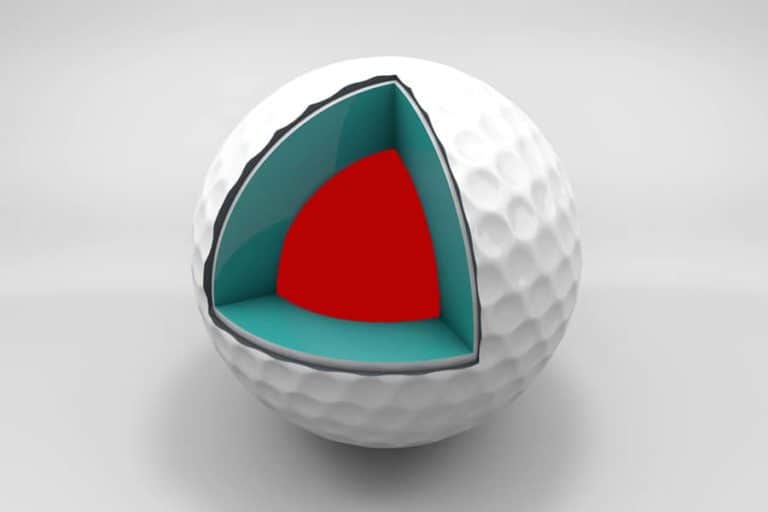How To Hit Bunker Shots – Complete Guide

Hitting bunker shots can be a challenging part of golf, especially for beginner and intermediate players. But with the proper technique and practice, you can gain confidence and become skilled at hitting great shots out of bunkers (sand traps).
When playing golf, a shot out of a bunker is referred to as a “bunker shot.” Most golfers know these bunkers by their more common names: traps, sand traps, or sand bunkers.
Here’s a step-by-step guide on how to hit bunker shots and get better over the golf course.
I. Steps to follow while hitting greenside bunker shots
A greenside bunker shot is when the ball lies in the sand trap near the green with a short distance left behind (15 yards or less).
Successfully getting the golf ball out of the sand can be difficult, but with the right approach, it is possible to achieve this. Here are the steps to follow while hitting a bunker shot:
1. Choose the right club
The first step in hitting a bunker shot is selecting the right club.
If you short-side yourself in a greenside bunker, you can use a sand wedge (56 degrees or more), as it has a higher loft. This club type is specifically designed for playing out of bunkers.
However, if the bunker is particularly deep or the lie is uneven, consider using a lob wedge (60 degrees), a pitching wedge, or even a 9-iron. Experiment with different golf clubs to find out which one works best for you.
2. Set the clubface
Before you set up for the shot, ensure that the clubface is open and not square to the target. Open clubface means tilting the angle of the clubface away from the target. This will help you generate more spin and lift the ball out of the bunker.
To open the clubface, grip the club with your left hand (for right-handed players) and turn your wrist clockwise. This will cause the clubface to open slightly.
3. Take a wider stance
Having a stable base is also a determining factor when you play bunker shots. To achieve this, you need to take a wider stance than normal when using a wedge in the fairway.
This will help you maintain your balance as you swing and make it easier to hit the ball cleanly. Make sure your feet are shoulder-width apart, and your weight is evenly distributed on both feet.
4. Dig the feet into the sand
To ensure stability and prevent slipping during your swing, it is important to dig your feet slightly into the sand when the position of the ball and your stance have been determined.
This will bring you closer to the ball and also help you make a “fat” shot, which is necessary for bunker shots. In addition, this action will let you assess the firmness of the sand surrounding the ball, which is permitted under golf rules when setting up for a shot.
5. Check the ball position
To execute a successful sand shot, move the ball slightly forward instead of positioning the ball in the middle of your stance as you would with a wedge on the fairway.
You need to place the ball inside the lead foot, allowing the club head to enter the sand about 2 inches behind the ball. This will lift the ball out of the sand without making contact and then carry it about 4 inches in front of its original position.
6. Make a shallower swing path
Making a shallower swing is one of the keys to hitting a good bunker shot. This will help you control the ball’s trajectory and ensure that it doesn’t go too high or too low.
To make a shallower swing, simply tilt your spine away from the target and keep your arms relatively close to your body. This will help you maintain a consistent swing plane and make it easier to hit the ball solidly.
7. Hit the sand, not the ball
One of the biggest mistakes beginners make when hitting bunker shots is trying to hit the ball too hard. This often leads to “thin” shots or even complete misses. Instead of focusing on hitting the ball, try to focus on hitting the sand.
This means swinging down into the sand behind the ball and letting the club do the work. The goal is to create a divot in the sand that’s about an inch deep. This will help you get the ball out of the bunker and onto the green.
8. Follow through
Finally, make sure to follow through on your swing. This means continuing to swing the club after you’ve made contact with the ball.
A full follow-through will help you generate more power and control the direction of your shot. Make sure to swing all the way through and finish with your hands high and your club pointing toward the target.
9. Practice from the bunker to control the distance
It is a good idea to practice from bunkers during your range sessions as often as you can to improve your bunker play. Experiment with different backswing lengths and pay attention to how it affects the distance and roll of the ball on the green.
Keep in mind that while you can vary the length of your backswing, it’s important to always complete a full follow-through for optimal swing acceleration and control.
Conclusion
By following the above steps, you can be able to hit great bunker shots with confidence and control. Practice makes perfect, so be sure to spend some time hitting bunker shots at the range or on the course. With a little bit of practice, you’ll be able to get out of bunkers consistently and lower your scores.
FAQs
Why are bunker shots hard?
Bunker shots can be challenging because they require different practices than a normal golf swing, such as a wider stance and a significantly open clubface. Additionally, the added stress of hitting off sand rather than grass can cause doubt in amateur players, leading to suboptimal performance.
Can we touch the sand before a bunker shot?
Before starting to play bunker shots, a golfer may remove loose impediments and movable obstructions. This can include any reasonable touching or movement of the sand in the bunker.
Why are bunker shots thin?
Thin contact on a bunker shot often occurs when the golfer hangs back too much on the right foot and tries to scoop the ball into the air. Surprisingly, sometimes this technique can also result in fat contact as well.








